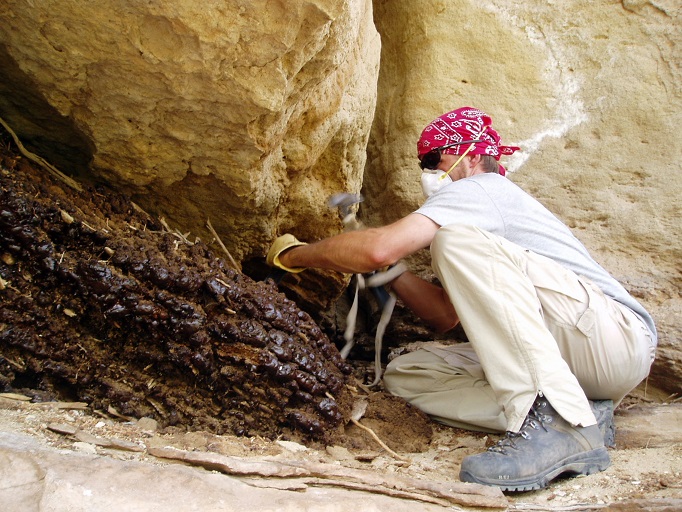Professor Larry Coats
About

Larry Coats is a paleoecologist specializing in the Quaternary, primarily focused on reconstructing past desert environments. One special interest of his is cave science; caves are unique environments unlike any other above-ground sites and usually preserve records of the past that would be lost anywhere else. He has conducted paleontological surveys of caves in Arizona, Utah, Colorado, New Mexico, and Oregon, and has discovered and explored caves in the Great Basin, Grand Canyon, and Colorado. These caves have contained the remains of extinct giant ground sloth (Nothotheriops shastensis), jaguar, grizzley bear, black bear, mountain lion, extinct mountain goat (Oreamnos harringtoni), California condors and extinct camels (Camelops hesternus). Cave sediments usually contain micro-fossils of snails, insects, rodents, reptiles, amphibians, and bats that can reveal details of past climate change that large animals would not respond to. Caves also contain records of vegetation change over time preserved within sediments and packrat middens. Caves are an invaluable resource to the study of past climates and should always be treated with great respect by visitors.
In a surprisingly similar environment to the dry caves of the Colorado Plateau, Larry has also conducted field work in Antarctica while investigating the occupation history of Adélie penguins (Pygocelis adeliae) in the Western Ross Sea along the Victoria Land Coast. He served as co-investigator in a National Science Foundation funded project in which we conducted field surveys of exposed coastlines to locate and excavate fossil penguin colonies dating to as long ago as 50,000 years. Because of his background as a mountaineer, his duties also included team survival, safety assurance, and first aid. If you're looking to connect, you can reach Larry Coats at larry.coats@geog.utah.edu.
Media
-
Interview with Ministry of Ideas - Genealogies of Modernity: Climbing the Mountains of Modernity
-
Time Team America Episode - Range Creek, Utah
Projects

Range Creek Canyon, Utah
Range Creek Canyon (RCC), located in east-central Utah, is a prime site for investigating past environmental and climatic conditions. This project is an interdisciplinary effort involving the RED Lab, the Department of Anthropology, and the Natural History Museum of Utah. Dr. Shannon Boomgarden and Prof. Larry Coats have been working in RCC since the early 2000s, with Dr. Boomgarden reconstructing the canyon's climate for agricultural insights and Prof. Coats studying paleoclimatology to understand vegetation dynamics of arid regions. For the paleoclimate reconstruction, Prof. Coats has led efforts in collecting and studying packrat middens, as well as teaching Paleo Field Methods at the field station and conducting student-led research through the Undergraduate Research Program (UROP).

Northern Snake Range, Nevada
This project is being conducted by the Ely Ranger District, Humboldt-Toiyabe National Forest working through partners at the University of Utah, University of North Carolina Wilmington, the Mammoth Site in Hot Springs South Dakota and the United States Forest Service. The project involves surveying, excavating and protecting fossil and cultural materials, stabilizing intact sediments, and protecting cave resources from future loss or damage at one of the most important and unique cave localities in the western U.S. located within the North Snake Range in White Pine County.
